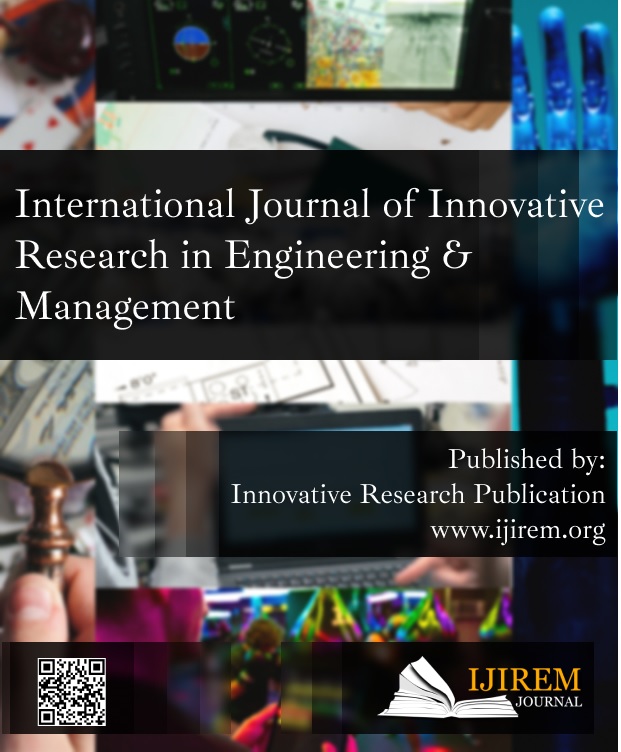A Model for Power Production Using a Solar-Grid Hybrid System
Keywords:
Grid networks, Conventional, Renewable, Biomass, Batteries, PV systemsAbstract
Energy is frequently referred to as a country's backbone. The socioeconomic status of a country can be influenced by energy use and consumption habits. Most industrial and home operations are now performed by equipment that runs on conventional energy as a result of technological advancements. Thermal power plants are responsible for a large portion of India's conventional electricity. It has two consequences: first, it causes pollution, and secondly, it jeopardises India's energy sector, as the country imports the great majority of crude oil and coal. One of the most harmful factors is these power plants. India, with the nation's biggest national grid network, is frequently unable to supply the quantity of energy promised, and the system's dependability is a cause of worry. Solar PV, on either side, is a long-term energy source that helps to reduce carbon dioxide emissions, despite the fact that it is weather-dependent and sporadic. Solar PV must be built with sufficient storage space to be dependable. In solar technology, a battery bank is typically utilised to store energy. Batteries are not used since they are harmful to the environment if discarded and eaten. In this regard, a technology that combines solar PV with the present grid is discussed in order to provide suitable alternatives for achieving excellent electricity 24 hours a day, seven days a week is detailed. The system is designed to get its electricity from solar PV on bright days, and if there was a power outage, it may be pulled from the grid. The mechanism pumps power into the grid when excess power generation exceeds load demand. The method investigates the impacts of helps produce and attempts to determine the best model size and cost. The programme replicates the model to identify innovative ways to increase integration of renewable energy, reduce power outages, and preserve the quality of electricity provided. The suggested plan lays out some of the most practical and cost-effective strategy for providing a high quality, dependable, and affordable supply of energy for home use.
Downloads
References
IEA, International energy annual 2004. Energy Information Administration; 2006
Akella AK Saini RP, SharmaMP. Social, economical and environmental impacts of renewable energy systems. Renewable Energy 2009;34:390–6
Ma T, Yang H., Lu L., &Peng J., (2015). Pumped storage based standalone photovoltaic power generation system: Modeling and techno-economic optimization. Applied Energy, 137, 649-659.
Himri Y et al. Techno-economical study of hybrid power system for a remote village in Algeria. Energy 2008;33(7):1128–36
Sharma R, Tiwari GN. Technical performance evaluation of stand-alone photovoltaic array for outdoor field conditions of New Delhi. Appl Energy 2012;92:644–52
Ackermann, T., Andersson, G., & Söder, L. (2001). Distributed generation: a definition. Electric Power Systems R Nema, P., Nema, R. K., &Rangnekar, S. (2009)
A current and future state of art development of hybrid energy system using wind and PV-solar: A review
Renewable and Sustainable Energy Reviews, 13(8), 2096- 2103.esearch, 57(3), 195–204. doi:10.1016/s0378- 7796(01)00101-8
Pradhan N., Karki N. R., & Pokhrel B. R. (2012, September). Reliability evaluation of small standalone hybrid solar PV-wind power system. In Sustainable Energy Technologies (ICSET), 2012 IEEE Third International Conference on (pp. 259-264). IEEE.8
Hafez, O., & Bhattacharya, K. (2012). Optimal planning and design of a renewable energy-based supply system for microgrids. Renewable Energy, 45, 7–15
Analysis of photovoltaic system energy performance evaluation method- National Renewable Energy Laboratory, USA.
International Electro technical Commission, Photovoltaic system performance monitoring - guidelines for measurement, data exchange and analysis. International Standard IEC 61724 Ed. 1.0 (1998-11)
IS/IEC 61724:1988, Indian standard Photovoltaic system performance monitoring-guidelines for measurement, data exchange and analysis.
www.nrel.gov/homer> [last accessed 16th May 2021]
Ma T., Yang H., Lu L., & Peng J. (2015). Pumped storage-based standalone photovoltaic power generation system: Modeling and techno-economic optimization. Applied energy, 137, 649-659.
